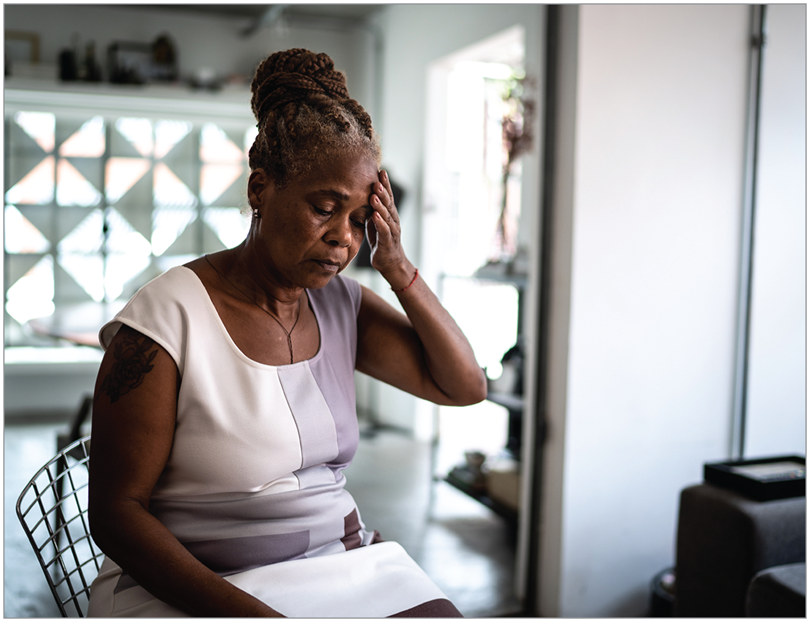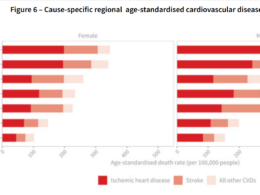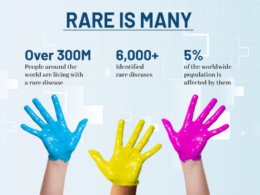This is a republication of the article “The US Now Has a Research Plan for Long COVID”, with the title above.
JAMA Network
Jennifer Abbasi
August 12, 2022
Executive Summary:
Joaquim Cardoso MSc.
health transformation — journal
September 20, 2022
Key messages:
What is the problem?
- 5% to 30% of people develop Long COVID after SARS-CoV-2 infection, depending on the estimate.
- The Brookings Institute earlier this year estimated that about 1 million people in the US may be out of the workforce due to Long COVID at any given time, likely contributing to labor shortages.
- A forthcoming update suggests the number could be 2 to 4 times higher, Katie Bach, MBA, MSc, a nonresident senior fellow at Brookings, wrote in an email to JAMA.
What are some of the diagnostic issues?
- The most frequent symptom is fatigue, according to Longo, and patients also commonly struggle with “brain fog” — problems with focus, memory, and word recollection — sleep disturbances, mood changes, headaches, loss of taste and smell, heart palpitations, dizziness, shortness of breath, cough, chest pain, diarrhea, stomach pain, joint or muscle pain, rashes, and pins-and-needles feelings.
- Although some physicians still may not believe that Long COVID exists — the new research plan explicitly states that it does — others may be flummoxed by the array of nebulous symptoms patients describe, many of which have no biomarker-based tests.
- … many primary care physicians, particularly those who serve the Medicaid population, aren’t aware that Long COVID can manifest as diagnosable conditions such as: postural orthostatic tachycardia syndrome (POTS), mast cell activation syndrome (MCAS), and myalgic encephalomyelitis/chronic fatigue syndrome (ME/CFS).
- If access is to be improved, … Long COVID treatment must be integrated into primary care. “The experience of many patients is still going into a doctor’s office, getting a ‘normal’ assessment, getting ‘normal’ lab work, and then being sent on their way.”
What was the reaction to the report?
- The National Research Action Plan on Long COVID, released this August 3, has been met with a mixture of enthusiasm and disappointment.
- It establishes a new office within Health and Human Services (HHS) headed by the assistant secretary for health, Admiral Rachel L. Levine, MD. Levine,
- An initial priority in the federal research plan is to develop diagnosis and treatment guidance that is comprehensive and equitable.
- Some say the plan — although a step in the right direction — touts already existing federal initiatives that are insufficient and slow-moving.
ORIGINAL PUBLICATION (full version)

Introduction
More than 2 years after patients with lingering health problems coined the term Long COVID, the US government has unveiled a research plan to understand, prevent, and treat the broad range of persistent and sometimes debilitating disease symptoms that are now known to affect many people after initial SARS-CoV-2 infection.
The National Research Action Plan on Long COVID, released this August 3, has been met with a mixture of enthusiasm and disappointment.
It establishes a new office within Health and Human Services (HHS) headed by the assistant secretary for health, Admiral Rachel L. Levine, MD. Levine, who recently spoke with JAMA and published a Viewpoint about the long-term effects of COVID, will oversee the Office of Long COVID Research and Practice as the federal government’s first Long COVID coordinator.
The task before her is daunting.
As the research plan report notes, 5% to 30% of people develop Long COVID after SARS-CoV-2 infection, depending on the estimate.
A study published after the plan was released estimates that 1 in 8 adults with SARS-CoV-2 infection experience Long COVID.
The study’s investigators compared symptoms among people who had and hadn’t been infected and among individuals both before and after their infections, allowing for some of the most reliable estimates to date.
Even at the lower end of the various approximations, millions of people in the US likely are living with 1 or more Long COVID symptoms for weeks, months, and sometimes years.
As the research plan report notes, 5% to 30% of people develop Long COVID after SARS-CoV-2 infection, depending on the estimate.
The new plan acknowledges that research is urgently needed to unravel the biological mechanisms that underpin the more than 200 symptoms and signs and 50 conditions attributed to Long COVID and to develop evidence-based treatments for them.
But some say the plan — although a step in the right direction — touts already existing federal initiatives that are insufficient and slow-moving.
But some say the plan — although a step in the right direction — touts already existing federal initiatives that are insufficient and slow-moving.

Upping the Urgency
Several HHS divisions, including the National Institutes of Health (NIH) and the Centers for Disease Control and Prevention (CDC), along with 13 other federal departments, contributed to the research plan, with input from academia, patients, and other stakeholders.
The report emphasizes that advancing the state of science, treatments, and services for Long COVID is an all-hands-on-deck effort that must involve public and private partners.
The plan defines Long COVID as “a multifaceted disease that can affect nearly every organ system” and can manifest as new or worsening chronic health problems, including but not limited to heart disease, diabetes, kidney disease, hematologic issues, and mental and neurologic conditions.
The signs, symptoms, and conditions continue or arise anew 4 weeks or more after the initial symptomatic or asymptomatic infection and may be relapsing and remitting.
Yale cardiologist and health policy professor Harlan Krumholz, MD, SM, who was an external advisor on the new plan, said that although this definition is likely to evolve over time, setting it was important.
“One of the principal problems is that there are a lot of competing ideas about what exactly Long COVID is,” he said in an interview with JAMA.
By establishing a broad definition, the government is “giving license to saying that there are lots of different forms of this, and that part of our job on the research side is to begin to organize our knowledge about all these different subgroups.”
“One of the principal problems is that there are a lot of competing ideas about what exactly Long COVID is,” he said in an interview with JAMA.
The plan also clarifies that the informal name “Long COVID” is essentially interchangeable with the technical term post-COVID conditions, or PCC, which includes the virus’ both direct and indirect effects, while the term postacute sequelae of SARS-CoV-2 infection, or PASC, includes only the direct effects.
Convening public and private partners to better align differing Long COVID definitions will be a priority of the federal Long COVID office over the next 6 months.
The research agenda details several goals, ranging from characterizing Long COVID’s full clinical spectrum and understanding its pathophysiology to improving surveillance and epidemiology and testing therapeutics and other interventions.
To advance knowledge in these and other areas, the federal government will accelerate and expand on work it is already supporting or conducting, like the NIH-funded Researching COVID to Enhance Recovery, or RECOVER, Initiative and the CDC-funded Innovative Support for Patients with SARS-CoV-2 Infections (INSPIRE) study.

In an interview, Angela Meriquez Vázquez, MSW, who has had post-COVID symptoms since March 2020 and is president of Body Politic, a global COVID-19 patient support group with 11 000 members, praised the establishment of the federal Long COVID office but pointed out that it still needs congressional funding. She called the plan otherwise “underwhelming.”
“
It’s mostly a summary of existing efforts,” she said. The consensus among patients, advocates, and many clinicians “is that existing efforts are insufficient, are not connected to the latest research in infection-triggered chronic illnesses, and are moving too slowly considering the wave of mass disability that Long COVID is bringing,” she added.
Echoing this sentiment, Ezekiel Emanuel, MD, an oncologist and codirector of the Healthcare Transformation Institute at the University of Pennsylvania, pointed to the 4-year, $1.15 billion RECOVER Initiative. The NIH last year awarded nearly $470 million of the budget to support clinical investigations. Emanuel noted that roughly 12 months after this funding was announced and just 5 months before the target end-of-year deadline, researchers have recruited about 7000 adults and 300 children — less than 20% of the expected total enrollment — and have yet to launch any clinical trials of treatments.
Emanuel spearheaded a COVID-19 strategic roadmap released earlier this year and was among the academics who were asked to contribute ideas for the federal government’s Long COVID research agenda.
He suggested hiring a contract research organization to run RECOVER but the idea wasn’t taken up, he said in an interview.
In his view, the pace and scope of the US government’s research response to Long COVID has been inadequate. “The slowness with which the NIH and the CDC are addressing this problem…is unjustifiable given the urgency of the problem,” he said. “This is equivalent to needing a vaccine, frankly. You’ve got millions, maybe more than 10 million people, afflicted with [Long COVID]. That’s a serious, urgent national problem. And I don’t think they’re approaching it in that way.”
In an emailed response to a request for information about the RECOVER Initiative, the NIH RECOVER team noted that multiple RECOVER studies are underway including an adult cohort study that includes pregnant individuals; pediatric cohort studies including a substudy of infants born to individuals with SARS-CoV-2 infection and a substudy of multisystem inflammatory syndrome in children; a tissue pathology and autopsy study; and 3 large electronic health record studies of adult and pediatric populations.
“
NIH is working to accelerate study progress and achieve the diversity of participants that represents the impact of COVID on all populations,” the team wrote in the email. “While these studies are ongoing, the NIH plans to launch clinical trials the fall of 2022 to test a range of interventions to treat and prevent PASC symptoms.” They noted that the cohort studies’ results also may inform future clinical trials.

Improving Clinical Care
Tulane School of Medicine clinical neurologist Michele Longo, MD, MPH, and a colleague opened a post-COVID care clinic in the fall of 2020, one of many such centers launched during the pandemic.
The New Orleans–based clinic and more than 40 others are part of the PASC Collaborative, an initiative organized by the American Academy of Physical Medicine and Rehabilitation (AAPM&R).
Longo said the collaborative’s members are excited and encouraged by the new research agenda. “The plan definitely addresses the requests that we’ve had for a whole-government response to Long COVID,” she said in an interview.
She also highlighted the plan’s emphasis on equitable access to care. In her view, making sure care is available to all individuals with Long COVID should be the top priority.
“We don’t want to see the same health disparities in care that we saw with acute management and treatment of COVID carry into the next public health crisis, which is going to be the care of people with Long COVID,” she said.
Some symptoms patients with Long COVID struggle with like fatigue and shortness of breath can be managed …
… with energy conservation techniques and by taking frequent breaks from prolonged physical or cognitive activity.
Physical therapists, occupational therapists, speech therapists, and behavioral health specialists all may have a role in symptom management.
Some symptoms patients with Long COVID struggle with like fatigue and shortness of breath can be managed with energy conservation techniques and by taking frequent breaks from prolonged physical or cognitive activity.
But patients first need to get in the door.
Her clinic currently has a 4- to 6-month waiting list and elsewhere the delays can be even longer, despite many centers offering both in-person and telemedicine appointments.
If access is to be improved, Longo said, Long COVID treatment must be integrated into primary care.
If access is to be improved, Longo said, Long COVID treatment must be integrated into primary care.
She and Meriquez Vázquez said that’s not currently the case. Meriquez Vázquez said:
“The experience of many patients is still going into a doctor’s office, getting a ‘normal’ assessment, getting ‘normal’ lab work, and then being sent on their way.”
“The experience of many patients is still going into a doctor’s office, getting a ‘normal’ assessment, getting ‘normal’ lab work, and then being sent on their way.”
“Everybody who’s suffering from Long COVID has a right to be frustrated,” Krumholz said.
Although some physicians still may not believe that Long COVID exists — the new research plan explicitly states that it does — others may be flummoxed by the array of nebulous symptoms patients describe, many of which have no biomarker-based tests.
Although some physicians still may not believe that Long COVID exists — the new research plan explicitly states that it does — others may be flummoxed by the array of nebulous symptoms patients describe, many of which have no biomarker-based tests.
The most frequent symptom is fatigue, according to Longo, and patients also commonly struggle with “brain fog” — problems with focus, memory, and word recollection — sleep disturbances, mood changes, headaches, loss of taste and smell, heart palpitations, dizziness, shortness of breath, cough, chest pain, diarrhea, stomach pain, joint or muscle pain, rashes, and pins-and-needles feelings.
The most frequent symptom is fatigue, according to Longo, and patients also commonly struggle with “brain fog” — problems with focus, memory, and word recollection — sleep disturbances, mood changes, headaches, loss of taste and smell, heart palpitations, dizziness, shortness of breath, cough, chest pain, diarrhea, stomach pain, joint or muscle pain, rashes, and pins-and-needles feelings.
The PASC collaborative and other groups are developing guidance to assist clinicians in treating these symptoms and improve patient care.
So far, the PASC collaborative has released consensus guidance statements for fatigue, cognitive symptoms, breathing discomfort, and cardiovascular complications.
An initial priority in the federal research plan is to develop diagnosis and treatment guidance that is comprehensive and equitable.
An HHS report on Long COVID services and supports released alongside the plan compiles existing clinical care guidance from several federal agencies and some professional associations including AAPM&R, the American College of Cardiology, and the American Nurses Association.
What’s clear is that ongoing symptoms can seriously affect patients’ ability to work, get schooling, and care for themselves and their families.
In fact, the Brookings Institute earlier this year estimated that about 1 million people in the US may be out of the workforce due to Long COVID at any given time, likely contributing to labor shortages.
A forthcoming update suggests the number could be 2 to 4 times higher, Katie Bach, MBA, MSc, a nonresident senior fellow at Brookings, wrote in an email to JAMA.
… the Brookings Institute … estimated that about 1 million people in the US may be out of the workforce due to Long COVID at any given time, likely contributing to labor shortages.
A forthcoming update suggests the number could be 2 to 4 times higher, …
Meriquez Vázquez said that many primary care physicians, particularly those who serve the Medicaid population, aren’t aware that Long COVID can manifest as diagnosable conditions such as postural orthostatic tachycardia syndrome (POTS), mast cell activation syndrome (MCAS), and myalgic encephalomyelitis/chronic fatigue syndrome (ME/CFS).
… many primary care physicians, particularly those who serve the Medicaid population, aren’t aware that Long COVID can manifest as diagnosable conditions such as …
… postural orthostatic tachycardia syndrome (POTS), mast cell activation syndrome (MCAS), and myalgic encephalomyelitis/chronic fatigue syndrome (ME/CFS).
“There’s definitely growing frustration that the information that does exist on these conditions is not being readily disseminated by public health out to clinicians, especially primary care,” she said.
She noted that scientific efforts are also lagging:
“For the most part big investments like the RECOVER Initiative are largely observational and not necessarily driving new research on ME/CFS, or POTS, or MCAS, which is really where I think the patient community wants the research to go in a much bigger way.”
“There’s definitely growing frustration that the information that does exist on these conditions is not being readily disseminated by public health out to clinicians, especially primary care,” …
… scientific efforts are also lagging
For his part, Krumholz has partnered with a Yale colleague, immunobiologist Akiko Iwasaki, PhD, on a large study to correlate clusters of Long COVID symptoms with specific signals from patients’ “immune signatures,” including chemokines and cytokines, T cells, and autoantibodies.
The goal is to better understand the immune system’s role in Long COVID symptoms.
“We need to work as fast as we can with all deliberate speed,” Krumholz said, “making sure we’re doing good science but recognizing every day that passes, people are just suffering.”

APPENDIX:
What Is Long COVID?
A new US government research plan presents an interim definition of Long COVID. It broadly defines Long COVID as signs, symptoms, and conditions that continue or develop after initial COVID-19 or SARS-CoV-2 infection. The plan defines the signs, symptoms, and conditions as follows:
- Are present 4 weeks or more after the initial phase of infection
- May be multisystemic
- May present with a relapsing-remitting pattern and progression or worsening over time, with the possibility of severe and life-threatening events even months or years after infection
The plan emphasizes that Long COVID is not 1 single condition. Instead, it represents many potentially overlapping entities that likely have different biological causes and different risk factors and outcomes.
Adapted from the National Research Action Plan on Long COVID. Department of Health and Human Services; August 2022.
Names mentioned:
A new office within Health and Human Services (HHS) headed by the assistant secretary for health, Admiral Rachel L. Levine, MD. Levine,
Yale cardiologist and health policy professor Harlan Krumholz, MD, SM
Tulane School of Medicine clinical neurologist Michele Longo, MD, MPH
Katie Bach, MBA, MSc, a nonresident senior fellow at Brookings,
Meriquez Vázquez said that
REFERENCE PUBLICATION
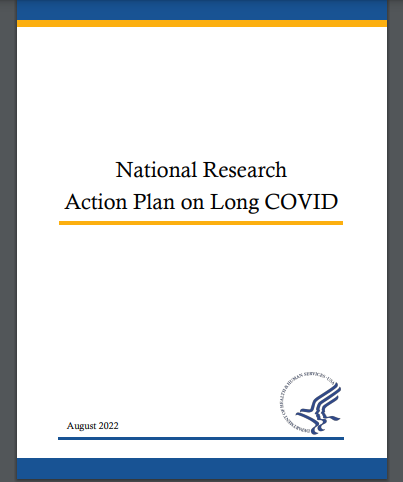
National Research Action Plan on Long COVID
August, 2022
Executive Summary:
On April 5, 2022, President Biden issued the Memorandum on Addressing the Long-Term Effects of COVID-19 outlining actions needed to support the American people in addressing the longerterm effects of COVID-19.
The President charged the Secretary of Health and Human Services with coordinating a government-wide response to Long COVID.
An element of that response was for the Department of Health and Human Services, in collaboration with federal partners, to develop two reports
- Services and Supports for Longer-Term Impacts of COVID-19 Report (Services Report)
- National Research Action Plan on Long COVID (the Plan).
The Services Report outlines federal services and mechanisms of support available to the American public in addressing the longer-term effects of COVID-19. The Plan provides the first U.S. government-wide national research agenda focused on advancing prevention, diagnosis, treatment, and provision of services and supports for individuals and families experiencing Long COVID.
The end of the COVID-19 public health emergency will not signal the end of the effects of the pandemic. These lingering effects may impact the health of the nation for years to come. Recovery from infection with SARS-CoV-2, the virus that causes COVID-19, can vary from person to person. Most individuals seem to recover quickly and completely. However, some report symptoms that persist or emerge weeks or even months after the initial phase of the infection has passed, even when the infection was asymptomatic. These sets of conditions are often referred to as “Long COVID.” This term was created and has been promulgated by patients and is used in this Plan. The Plan also recognizes the importance of two technical terms, PostCOVID-19 conditions, or PCC, broadly equivalent to Long COVID, and Post-acute Sequalae of SARS-CoV-2 infection, focused on the direct effects of the virus.
Research into the causes and consequences of Long COVID and associated conditions, the underlying biological mechanisms, the therapies that work, and services and supports needed for persons experiencing Long COVID are necessary to develop strategies to prevent, treat, and support those with Long COVID. The Plan was developed with four guiding principles: orienting research towards improving patient care and outcomes, health equity, accelerating and expanding existing research, and partner engagement. The Plan ensures an effective, comprehensive, and equitable research strategy to inform the national response to Long COVID’s impacts on individuals, families, communities, and all of society, inclusive of age, gender, race, ethnicity, geographic location, socioeconomic status, insurance coverage status, pregnancy status, and disability status. The actions in the plan will require federal investment. Action that can be taken with current funding are underway. Additional funding proposed in the President’s fiscal year 2023 budget and beyond will enable expansion the implementation of this Plan.
Partner Input
The Plan was developed with engagement from both public and private partners, including individuals experiencing Long COVID. Meaningful input is critical throughout the research process, as it can help guide research projects with attention to context and culture, thereby facilitating translation of research into effective policy and practice. We will continue facilitating these important conversations with our partners to gain feedback on the Plan, implement the Plan’s strategies, and iterate the Plan moving forward.
Current U.S. Government Long COVID Research
The Plan builds on ongoing research supported or conducted by the U.S. government and aims to accelerate and expand it, in addition to calling for enhanced action by the private sector. The current Long COVID federal research portfolio, ongoing since 2020 and represented in over 100 published articles, demonstrates innovation and early achievements and highlights the importance of collaboration between the public and private sectors.
The current U.S. government portfolio is described in detail in this report and spans the following seven areas: characterizing the full clinical spectrum of long COVID and diagnostic strategies; pathophysiology; surveillance and epidemiology; Long COVID and overall wellbeing; therapeutics and other health interventions; human services, supports, and interventions; and health services and health economics research.
While the U.S. government continues to lead and make advancements in research, much more must be done to support persons experiencing Long COVID symptoms and to inform care and support for patients, their families, and caregivers. A national, U.S. government-wide coordinated, action-oriented approach is urgently needed. By infusing health equity considerations throughout the Plan, such as having inclusive and diverse participation in research activities, we are ensuring that our research and resulting policy and programmatic actions are effective and responsive to the needs of affected populations.
Accelerating Research and Innovation in Long COVID
Fully understanding the implications of Long COVID requires a comprehensive, multidisciplinary, effective approach, leveraging the resources of the U.S. research enterprise and collaborative efforts across the federal government, coupled with strong public and private partnership. With these core tenets, the Plan includes steps to Accelerate Research and Innovation in Long COVID.
The Plan provides a detailed call to action across all sectors of research, both public and private, including academia, to accelerate the delivery of evidence and data.
The Plan describes priorities across the seven research areas, as follows.
- 1.Characterizing the Full Clinical Spectrum of Long COVID and Diagnostic Strategies.
- 2.Pathophysiology
- 3.Surveillance and Epidemiology
- 4. Long COVID and Overall Well-Being
- 5.Therapeutics and Other Health Interventions
- 6.Human Services, Supports, and Interventions
- 7.Health Services and Health Economics Research.
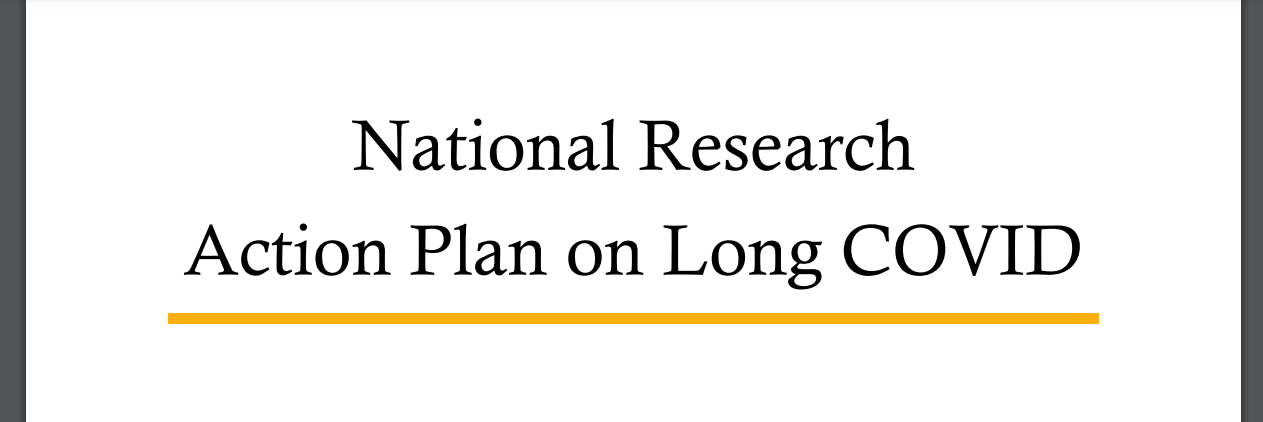
1.Characterizing the Full Clinical Spectrum of Long COVID and Diagnostic Strategies.
Build on extensive ongoing research led by National Institutes of Health (NIH), Centers for Disease Control and Prevention (CDC), the Department of Veterans Affairs (VA), and other agencies, for example the Researching COVID to Enhance Recovery (RECOVER) Initiative and Innovative Support for Patients with SARS-CoV-2 Infection (INSPIRE), to convene public and private partners to better align interim definitions of Long COVID for clinical care, surveillance, and research; lead further studies of the impact of SARS-CoV-2 infection on development and clinical course of new onset chronic disease states (e.g. diabetes); initiate research that disentangles the broader longer-term effects of the pandemic on physical and behavioral health (e.g., mental health and substance use challenges) from those of SARS-CoV-2 infection and re-infection; and further research to examine Long COVID and other post-infectious illnesses, including dysautonomia, and myalgic encephalomyelitis and chronic fatigue syndrome (ME/CFS), to identify commonalities and differences.
2.Pathophysiology.
Build on extensive ongoing research, for example the RECOVER Initiative led by NIH, to achieve a deeper understanding, from the molecular to system levels, of Long COVID within the broader context of post-infectious chronic conditions and other diseases that may have infectious origins, including dysautonomia and ME/CFS.
3.Surveillance and Epidemiology.
Build on extensive ongoing research, primarily led by CDC, such as INSPIRE Study, and the VA, to conduct additional studies of Long COVID risk factors, health trajectories and outcomes that are inclusive of age, gender, race, ethnicity, geographic location, socioeconomic status, insurance coverage status, pregnancy status, and disability status, enabled by new capabilities in data analytics; and lead studies that can rapidly adapt to examine risk and protective factors as they emerge (i.e., new variants, vaccinations, repeat infections, and therapies for COVID-19) on risk of Long COVID.
4. Long COVID and Overall Well-Being.
Conduct comprehensive studies of the effects of Long COVID on educational outcomes in children and youth, with a focus on vulnerable populations, including racial and ethnic minority groups, those who are economically disadvantaged, and those in rural communities; and lead research, including qualitative and mixed methods studies, to understand the impact of Long COVID on health-related quality of life, behavioral health, employment, disability determinations, education and development, and the impact on caregivers and family well-being, especially among disadvantaged groups, expanding upon initial work led by the VA, for example the COVID-19 Observational Research Collaboratory Long-term Outcomes Study (CORCLTO), the Health Resources and Services Administration, for example National Survey of Children’s Health Longitudinal Cohort Study (NSCH-LC), the Social Security Administration, and the Department of Labor.
5.Therapeutics and Other Health Interventions.
Expand the portfolio of studies, including the RECOVER Initiative and others, on the effectiveness of therapeutics to prevent and treat Long COVID to include antivirals, anti-inflammatory, immune modulators, and other existing or new treatments; further studies to subtype Long COVID including characterization of distinct sub-entities with distinct set of risk factors and outcomes and evaluation of treatment strategies for these sub-types; and initiate studies of nonpharmacologic interventions to prevent and treat Long COVID.
6.Human Services, Supports, and Interventions.
Lead new work in identifying and evaluating optimal person-centered models of care for people with various forms of Long COVID; and lead comprehensive studies of human services and supports interventions, including disability services and caregiver supports, to ensure individuals living with Long COVID can fully participate in their communities, building on work by the Administration for Community Living ACL), the Department of Defense (DOD), and the SSA.
7.Health Services and Health Economics Research.
Lead new studies, including systems research, to develop, implement, and evaluate models of care delivery that enable primary care providers to effectively manage Long COVID and associated conditions; lead new research to address barriers to effective care in underserved communities and models of care designed to address and eliminate health inequities; conduct rapid and ongoing synthesis of new evidence to distill existing research into actionable insights guiding care of people with Long COVID, including cost-effectiveness modeling of prevention and treatment strategies; and expand work, for example analyses led by the Office of the Assistant Secretary for Planning and Analysis, in impact of Long COVID on and economic costs of Long COVID to the health system, human services and supports programs, and society.
To lead and coordinate the work on Long COVID and in response to the April 5, 2022, Presidential Memo, Memorandum on Addressing the Long-Term Effects of COVID-19, HHS established a U.S. government-wide Long COVID Coordination Council (LCCC), chaired by the HHS Assistant Secretary for Health.
HHS will continue the current approach of the Assistant Secretary of Health serving as the Long COVID coordinator and formalizing the responsibility through establishment of a new Office of Long COVID Research and Practice. The Assistant Secretary for Health, in a role as the Long COVID Coordinator, will implement the National Research Action Plan on Long COVID and coordinate efforts across the federal government through the Long COVID Coordination Council. The Coordinator will also establish the Secretary’s Advisory Committee on Long COVID to continually engage non-governmental partners and develop and implement a strategic communications plan to share findings from Long COVID research. This new office, which will need resources and staffing, will ensure standardization and accountability for the Plan through implementation plans and annual progress reports. HHS and federal partner agencies will also work with Congress and government leaders through continued investment in Long COVID coordination and research, to create and establish new structures to fulfill the calls to action, such as establishing and maintaining a framework for a multipronged approach to Long COVID surveillance; effective systems and strategies for rapid implementation of Long COVID clinical trials; considering comprehensive approaches to fund interdisciplinary research on Long COVID; and engagement of federal agencies to contribute to a coordinated effort for a national real world evidence approach that would include Long COVID.
The best prevention of Long COVID and its related impacts remains to avoid infection and reinfection of SARS-CoV-2 by following basic interventions such as getting vaccinated and boosted, maintaining social distancing, wearing a mask, and handwashing.
At the same time HHS will work diligently to advance research to prevent, diagnose, treat, and alleviate the impact of Long COVID for the nation.
The Plan affirms the U.S. government’s commitment to addressing the impacts of Long COVID with federal government resources, in collaboration with the private sector, and improving our Nation’s health and well-being.
The Plan, along with the accompanying Services Report, represent the federal government’s response to ensure the acceleration of scientific progress and provide individuals with Long COVID the support and services they need.
Names mentioned:
A new office within Health and Human Services (HHS) headed by the assistant secretary for health, Admiral Rachel L. Levine, MD. Levine,
Yale cardiologist and health policy professor Harlan Krumholz, MD, SM
Tulane School of Medicine clinical neurologist Michele Longo, MD, MPH
Katie Bach, MBA, MSc, a nonresident senior fellow at Brookings,
Meriquez Vázquez said that




